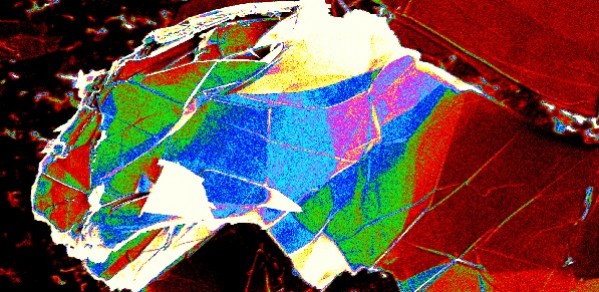
Creative images and video spanning tissue engineering, aircraft engines and nanotechnology have won prizes in the Department’s 2017 ZEISS Photography Competition.
First Prize was awarded to PhD student Bryn Noel Ubald for his video below which shows how fluid behaves as it moves over a turbine blade with a temperature probe at the front. The video is part of a study which uses high-fidelity computational modelling to understand the impact of measurement devices within aircraft engines.
Fellow PhD student Elisabeth Gill won Second Prize with this striking image of micro-scale fibres drawn from a viscous gelatin solution across a 3D printed PLA (Poly(lactic Acid) support structure – the sparkly material you can see along the top of the image. The goal of her work is to integrate an open source 3D printing platform and a low voltage electrospinning technique to create high resolution, 3D biomaterial fibre 'architectures' to act as part of a tissue scaffold for 3D cell culture.
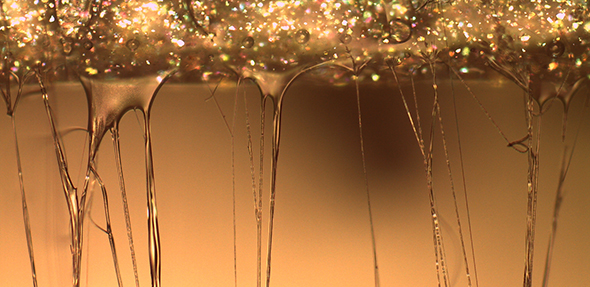
Elisabeth Gill - SECOND PRIZE: Gelatin Micro-fibre Initiation
Research Associate Alex Justin’s image of red and blue capillary formation secured Third Prize. Alex works in the area of tissue engineering – the in vitro generation of large tissues and organs. This image shows two 'multi-cellular spheroids', made from a large cluster of endothelial cells, which normally coat the internal surface of blood vessels. The spheroids are embedded alongside a large number of fibroblasts into a 3D collagen hydrogel, which is similar to the extracellular matrix of native tissue. The interaction between these cell types induces the endothelial cells to sprout new capillary-sized vessels into the bulk.
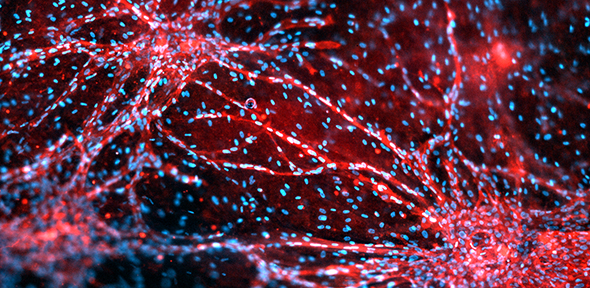
Alex Justin - THIRD PRIZE: Capillary Formation from Multi-Cellular Spheroids
‘Small but strong: Nano-Man’ certainly caught the judges attention. This intricate micrograph was captured using a scanning electron microscope and was awarded the SEM Prize.
Ravi Chitwan, PhD student at Queen’s University Belfast, and Cambridge Research Associate Dr Wei Tan managed to capture thousands of entangled carbon nanotubes (CNTs) in a form resembling a sculpture. CNTs can be best described as seamless hollow tubes comprised of hexagonally arranged carbon atoms. They exhibit extremely useful material properties such as superior strength, high electrical and thermal conductivity. CNTs are 100 times stronger than steel, but only one-sixth as heavy. Using CNTs could ultimately provide improved lightning-strike protection, impact damage resistance, anti-icing capability and integrated structural health monitoring to composite aerostructures.
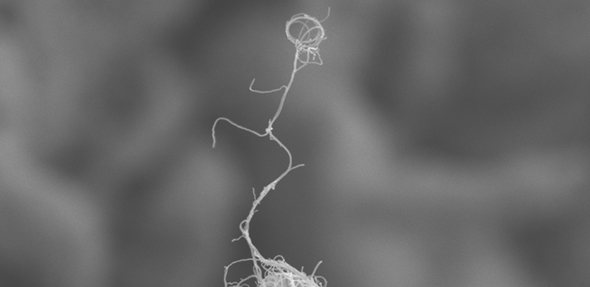
Ravi Chitwan, PhD student at Queen’s University Belfast, and Wei Tan, Department of Engineering - SEM PRIZE: Small but strong: Nano-Man
Aude Mulard, former student at the Department of Engineering, won the Head of Department Prize with this computer simulation which shows the complex 'fingering instabilities' of a self-propelled fluid pushed against a viscous fluid. The goal of this work is to understand the mechanical process of wound healing and tumour growth. When a tumour grows in one's body, lines of cancer cells may protrude out of the mass, detach themselves from it and begin invading the body. This process is called metastasis, and cancer at this stage is extremely difficult to treat.
The competition, sponsored by ZEISS (Scanning electron microscopy division), international leaders in the fields of optics and optoelectronics, has been held annually for the last 13 years. The panel of judges included Roberto Cipolla, Professor of Information Engineering, Dr Allan McRobie, Reader in Engineering, Professor David Cardwell, Head of Department and Philip Guildford, Director of Strategy and Operations.
“Once again, I am blown away by the quality of the submissions we received for the photo competition,” said Philip Guildford. “Each of these images and video tells a story about the work that our faculty, researchers, students and staff are doing to advance our understanding of the world, and each of those stories is told beautifully.”
More of this year's shortlisted images and video are available to view here. The remainder can be seen on the Department's Flickr page.
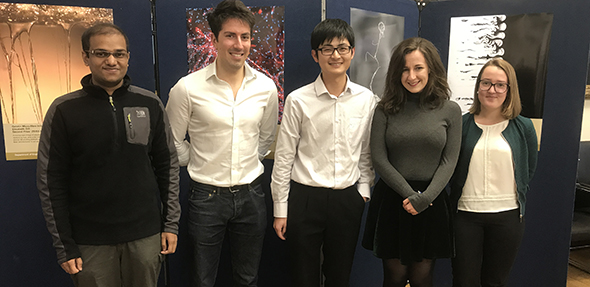
The 2017 winners, from left: Bryn Noel Ubald (1st Prize); Alex Justin (3rd Prize); Wei Tan (SEM Prize); Elisabeth Gill (2nd Prize); Aude Mulard (Head of Department Prize).

